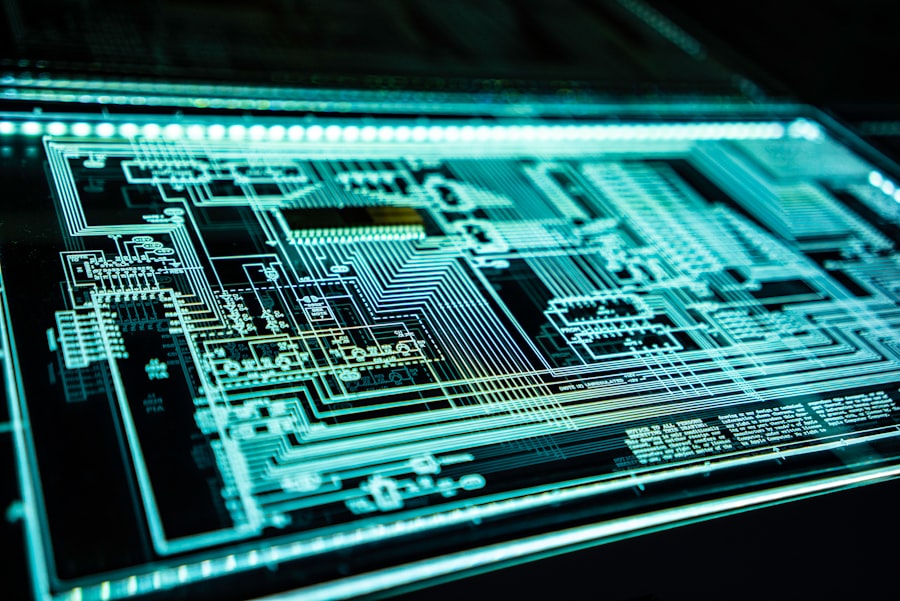In the realm of space exploration, the concept of In-Situ Resource Utilization (ISRU) has emerged as a pivotal technology that could redefine humanity’s approach to venturing beyond Earth. As missions to the Moon, Mars, and beyond become more ambitious, the need for sustainable practices in space has never been more pressing. ISRU technology focuses on harnessing and utilizing resources found in situ—meaning on-site or in the environment—rather than relying solely on supplies launched from Earth.
This innovative approach not only promises to enhance the feasibility of long-duration missions but also aims to reduce the logistical burden associated with transporting materials across vast distances. The significance of ISRU technology extends beyond mere convenience; it embodies a paradigm shift in how humanity envisions its future in space. By tapping into local resources, astronauts can potentially produce essential materials such as water, oxygen, and fuel directly from the celestial bodies they explore.
This capability could lead to self-sustaining habitats and reduce the dependency on Earth-based supply chains, ultimately paving the way for a more permanent human presence in space. As the world stands on the brink of a new era in space exploration, understanding ISRU technology becomes crucial for grasping its potential impact on future missions.
Key Takeaways
- ISRU technology refers to the utilization of resources found in space to support human exploration and settlement.
- Maximizing resources in space exploration is crucial for reducing costs and increasing sustainability.
- ISRU technology has potential applications in producing fuel, water, oxygen, and construction materials on other planets and moons.
- Advantages of ISRU technology include reducing the need for Earth-based resources and enabling long-term human presence in space, but challenges include technological complexity and initial investment.
- Current space missions, such as the Mars Perseverance rover, are utilizing ISRU technology to extract and analyze resources on other planets.
Understanding the concept of In-Situ Resource Utilization
In-Situ Resource Utilization is a multifaceted concept that encompasses various technologies and methodologies aimed at extracting and processing local resources for use in space missions. At its core, ISRU seeks to minimize the need for transporting materials from Earth by leveraging what is readily available in the environment of celestial bodies.
This not only conserves resources but also enhances mission sustainability. The implementation of ISRU technology requires a deep understanding of the environmental conditions and resource availability on different celestial bodies. Each location presents unique challenges and opportunities; for example, lunar regolith contains valuable materials that can be processed into building materials or even fuel.
By conducting thorough analyses and developing specialized equipment, scientists and engineers can create systems capable of efficiently utilizing these resources. The successful application of ISRU technology hinges on interdisciplinary collaboration, combining expertise from fields such as geology, engineering, and chemistry to devise innovative solutions tailored to specific environments.
The importance of maximizing resources in space exploration

Maximizing resources in space exploration is not merely a matter of efficiency; it is a fundamental necessity for the success of long-term missions. As humanity sets its sights on destinations like Mars and beyond, the challenges associated with transporting supplies from Earth become increasingly daunting. The cost of launching materials into space is astronomical, both in terms of financial expenditure and environmental impact.
By utilizing local resources, space agencies can significantly reduce the volume of supplies that need to be sent from Earth, thereby lowering costs and minimizing waste. Moreover, the ability to maximize resources directly contributes to mission sustainability. Long-duration missions require a continuous supply of essentials such as water, food, and breathable air.
ISRU technology offers a viable solution by enabling astronauts to produce these necessities on-site. For instance, extracting water from Martian ice or generating oxygen from carbon dioxide not only supports human life but also allows for the production of rocket fuel for return journeys or further exploration. This self-sufficiency is crucial for establishing a sustainable human presence beyond Earth, ensuring that future generations can thrive in extraterrestrial environments.
ISRU technology and its potential applications
| ISRU Technology | Potential Applications |
|---|---|
| In-situ resource utilization (ISRU) | Space exploration |
| Extraction of resources from celestial bodies | Supporting human missions to Mars |
| Production of propellants, water, and oxygen | Reducing the cost of space missions |
| Utilization of local resources for sustainability | Establishing long-term presence on other planets |
The potential applications of ISRU technology are vast and varied, encompassing a wide range of functions that could revolutionize space exploration. One of the most promising applications is the extraction of water from celestial bodies. Water is not only essential for human survival but can also be split into hydrogen and oxygen through electrolysis, providing both breathable air and rocket fuel.
This dual functionality makes water extraction a cornerstone of ISRU efforts on planets like Mars and moons such as Europa or Enceladus. Another significant application lies in the utilization of local materials for construction and manufacturing. Lunar regolith, for example, can be processed to create building materials for habitats or infrastructure on the Moon’s surface.
This capability would reduce the need to transport heavy construction materials from Earth, making it feasible to establish permanent bases on other celestial bodies. Additionally, ISRU technology could facilitate the production of food through advanced agricultural techniques that utilize local resources, further enhancing self-sufficiency during long missions.
Advantages and challenges of using ISRU technology
The advantages of employing ISRU technology in space exploration are manifold. Primarily, it offers significant cost savings by reducing the amount of material that must be launched from Earth. This reduction not only lowers financial expenditures but also decreases the environmental impact associated with rocket launches.
Furthermore, ISRU enhances mission sustainability by enabling astronauts to produce essential resources on-site, thereby extending mission durations and increasing the feasibility of long-term habitation. However, challenges remain in the implementation of ISRU technology. The harsh environments of celestial bodies present significant obstacles; for instance, extreme temperatures, radiation exposure, and dust storms can complicate resource extraction processes.
Additionally, developing reliable systems that can operate autonomously in these conditions requires extensive research and testing. There is also the challenge of ensuring that ISRU technologies are adaptable to different environments, as each celestial body presents unique resource availability and extraction methods. Overcoming these challenges will require innovative engineering solutions and rigorous testing to ensure that ISRU technologies can function effectively in real-world scenarios.
Examples of ISRU technology in current space missions

Current space missions are already beginning to incorporate elements of ISRU technology, showcasing its potential for future exploration endeavors. NASA’s Perseverance rover, which landed on Mars in February 2021, is equipped with an experiment called MOXIE (Mars Oxygen In-Situ Resource Utilization Experiment). MOXIE aims to demonstrate the feasibility of producing oxygen from Martian carbon dioxide using electrochemical processes.
This groundbreaking experiment represents a significant step toward establishing a sustainable human presence on Mars by providing a method for generating breathable air.
As part of this initiative, plans are underway to utilize lunar regolith for various applications, including construction and resource extraction.
The Lunar Gateway project also envisions using ISRU technologies to support long-term missions in lunar orbit and facilitate further exploration of Mars and beyond. These examples illustrate how current missions are laying the groundwork for future advancements in ISRU technology, highlighting its critical role in humanity’s quest to explore and inhabit other worlds.
Future prospects and developments in ISRU technology
The future prospects for ISRU technology are promising, with ongoing research and development aimed at overcoming existing challenges and expanding its applications. As space agencies collaborate with private companies and academic institutions, innovative solutions are being explored to enhance resource extraction processes and improve efficiency. For instance, advancements in robotics and automation could lead to more sophisticated systems capable of operating autonomously in harsh environments, thereby increasing the reliability of ISRU technologies.
Moreover, as missions become more ambitious—such as plans for crewed missions to Mars—there will be an increasing emphasis on developing robust ISRU systems that can support long-term habitation. Research into advanced materials processing techniques may enable astronauts to utilize local resources not only for life support but also for manufacturing tools and equipment necessary for exploration activities. The integration of artificial intelligence into ISRU systems could further optimize resource management and extraction processes, paving the way for a new era of sustainable space exploration.
How ISRU technology can reduce costs and increase sustainability in space exploration
ISRU technology holds immense potential for reducing costs associated with space exploration while simultaneously enhancing sustainability efforts. By minimizing reliance on Earth-based supplies, space agencies can significantly decrease launch costs—a critical factor given the high expenses associated with sending payloads into orbit. The ability to produce essential resources on-site translates into fewer shipments required from Earth, allowing funds to be allocated toward other mission-critical areas such as research and development.
In addition to cost savings, ISRU technology promotes sustainability by fostering self-sufficiency during long-duration missions. The capacity to generate water, oxygen, and fuel locally means that astronauts can remain on-site for extended periods without needing constant resupply missions from Earth. This self-reliance not only supports human life but also reduces waste generated by transporting materials across vast distances.
As humanity strives for a more sustainable approach to space exploration, ISRU technology emerges as a key player in achieving these goals.
The role of ISRU technology in enabling long-term human presence in space
The role of ISRU technology in enabling long-term human presence in space cannot be overstated. As humanity looks toward establishing permanent bases on celestial bodies like Mars or the Moon, the ability to utilize local resources becomes essential for survival and sustainability. By producing vital resources such as water and oxygen directly from the environment, astronauts can create habitats that support extended stays without relying heavily on resupply missions from Earth.
Furthermore, ISRU technology facilitates the development of infrastructure necessary for long-term habitation. The ability to process local materials into building supplies allows for the construction of durable habitats capable of withstanding harsh environmental conditions. This capability not only enhances safety but also fosters a sense of permanence as humans begin to establish roots beyond Earth.
Ultimately, ISRU technology serves as a cornerstone for creating sustainable communities in space, paving the way for future generations to thrive among the stars.
Collaborative efforts and partnerships in advancing ISRU technology
Advancing ISRU technology requires collaborative efforts among various stakeholders within the space community. Space agencies like NASA and ESA are increasingly partnering with private companies and academic institutions to leverage diverse expertise and resources in developing innovative solutions for resource utilization in space. These collaborations foster an environment where ideas can flourish, leading to breakthroughs that may not have been possible through isolated efforts.
International partnerships also play a crucial role in advancing ISRU technology. As countries around the world recognize the importance of sustainable practices in space exploration, collaborative initiatives are emerging that pool knowledge and resources toward common goals. By sharing research findings and technological advancements, nations can accelerate progress in developing effective ISRU systems that benefit all participants involved in space exploration endeavors.
the potential impact of ISRU technology on the future of space exploration
In conclusion, In-Situ Resource Utilization technology stands at the forefront of transforming humanity’s approach to space exploration. By harnessing local resources found on celestial bodies like Mars or the Moon, ISRU has the potential to significantly reduce costs while enhancing sustainability efforts during long-duration missions. As current missions begin to implement elements of this innovative technology, it becomes increasingly clear that ISRU will play a vital role in enabling a permanent human presence beyond Earth.
The future prospects for ISRU technology are bright, with ongoing research paving the way for advancements that will further expand its applications and capabilities. Collaborative efforts among international partners will continue to drive innovation forward as humanity embarks on its quest to explore new frontiers among the stars. Ultimately, ISRU technology represents not just a means of survival but also a pathway toward establishing thriving communities beyond our home planet—an exciting prospect that could redefine what it means to be human in an ever-expanding universe.
In the realm of space exploration, technology for in situ resource utilization (ISRU) is becoming increasingly vital. ISRU involves the use of local resources to support missions, reducing the need to transport materials from Earth. This approach is crucial for sustainable exploration of the Moon, Mars, and beyond. A related article that delves into the advancements and implications of ISRU technology can be found on Real Lore and Order. For more insights, you can read the article by visiting Real Lore and Order. This resource provides a comprehensive overview of how ISRU is shaping the future of space missions and the potential it holds for long-term human presence on other celestial bodies.
WATCH THIS! 🚀 Why The Moon Is The Next Battlefield: The Geopolitics of Cislunar Space
FAQs
What is in situ resource utilization (ISRU) technology?
In situ resource utilization (ISRU) technology refers to the process of using materials and resources found in the environment of a planetary body, such as the Moon or Mars, to support human exploration and settlement. This technology aims to reduce the need for transporting resources from Earth and enable sustainable long-term human presence in space.
What are the potential benefits of ISRU technology?
ISRU technology has the potential to significantly reduce the cost and complexity of space missions by minimizing the need to transport resources from Earth. It can also enable the production of fuel, water, oxygen, and other essential resources for sustaining human life and conducting further exploration and research in space.
What are some examples of ISRU technologies?
Some examples of ISRU technologies include extracting water from lunar or Martian regolith, producing oxygen from local resources, manufacturing construction materials using in situ materials, and generating fuel from planetary resources. These technologies are being developed and tested for future space missions.
How is ISRU technology being used in current space exploration efforts?
ISRU technology is being actively researched and developed for upcoming space missions, such as NASA’s Artemis program, which aims to return humans to the Moon by 2024 and establish a sustainable human presence. ISRU technologies are also being considered for future crewed missions to Mars and other planetary bodies.
What are the challenges associated with ISRU technology?
Challenges associated with ISRU technology include the need to develop reliable and efficient extraction and processing methods for planetary resources, as well as ensuring the safety and reliability of ISRU systems in the harsh and remote environments of space. Additionally, regulatory and legal considerations may need to be addressed for utilizing resources on other celestial bodies.
